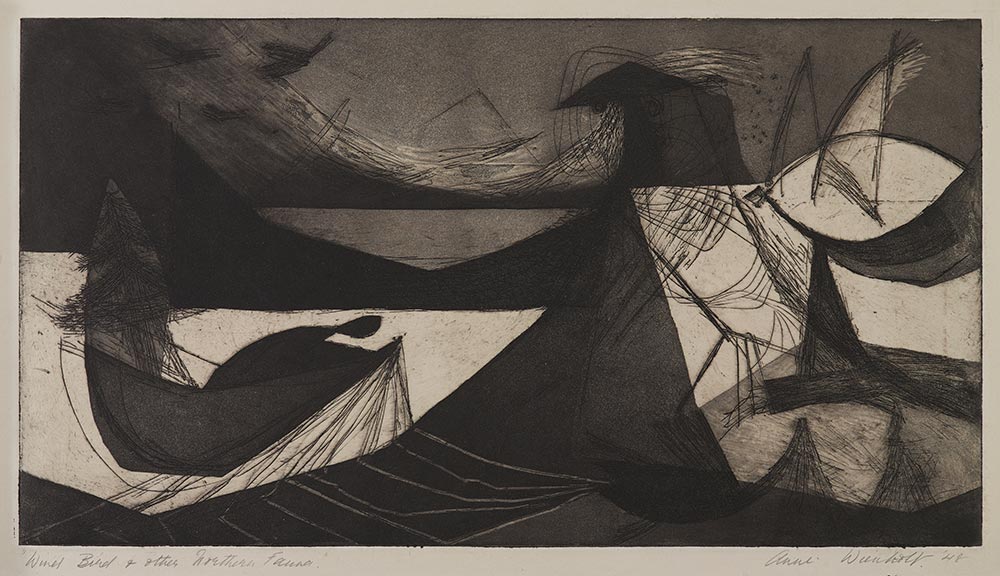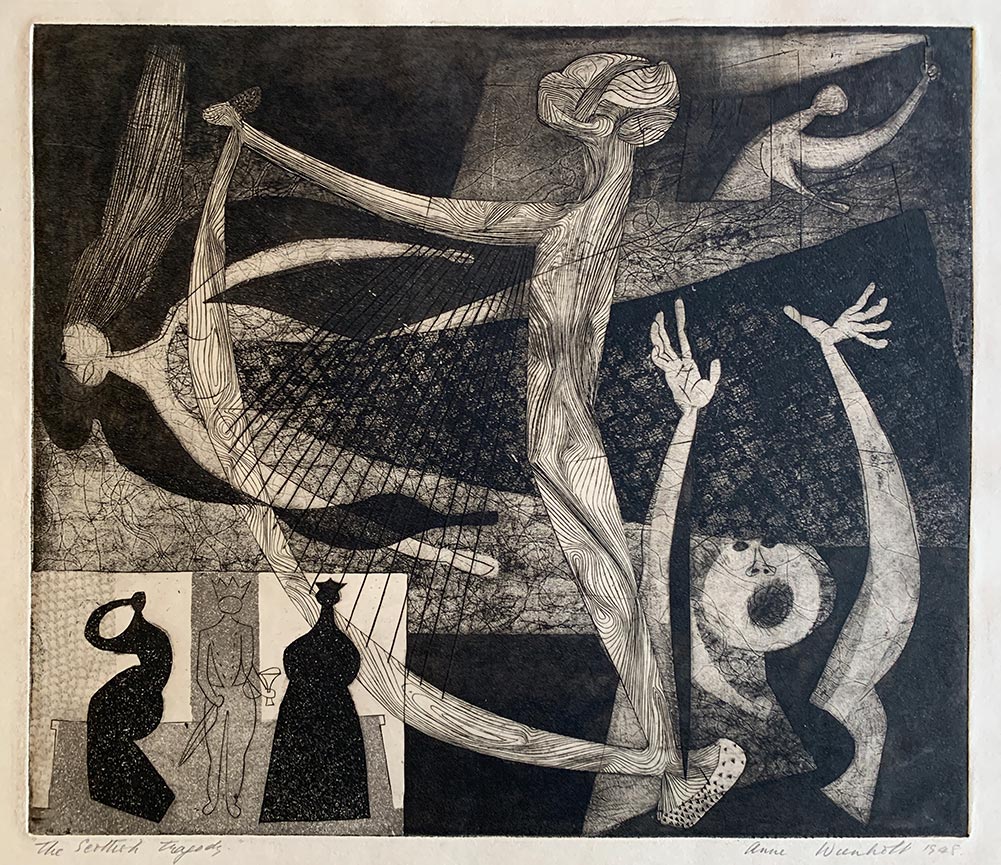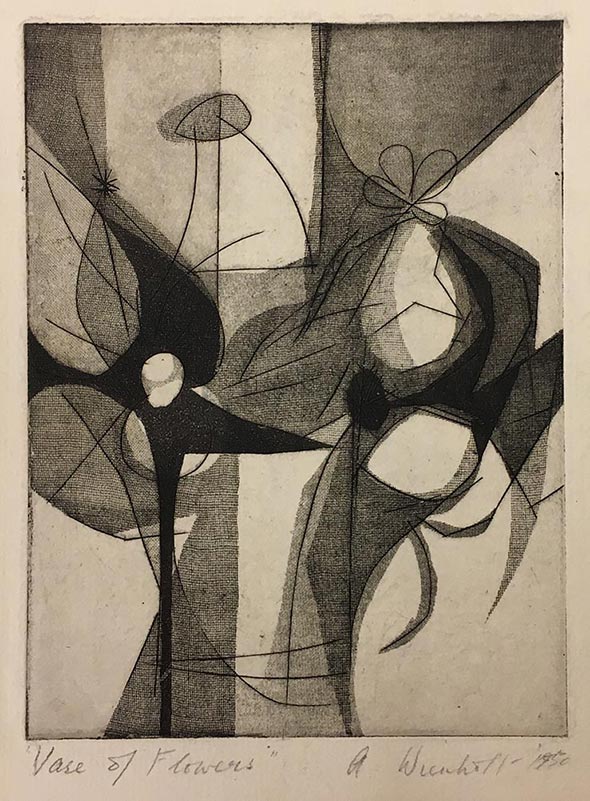93. Anne Wienholt
| Life Dates | 1920-2018 |
| Place of Birth | Leura, Australia |
| Place of Death | Larkspur, CA, UA |
| Birth Name | Anne Wienholt |
Born in Leura, Australia, Wienholt received her earliest art training with William Dobell at the East Sydney Technical College—also Margaret Cilento’s alma mater—between 1938 and 1941.1 After graduation, she developed a unique expressive style of portraiture and figure painting that won critical notice. Wienholt exhibited widely, having her first solo show in 1942 at the Macquarie Galleries in Sydney, and wrote and illustrated stories for several Australian magazines and newspapers. She lived for some time at Merioola, a bohemian artists’ colony located in Woollahra, and in 1945 she won the New South Wales Traveling Art Scholarship, which provided a generous three-year stipend. Arriving in New York in January, she enrolled in Yasuo Kuniyoshi’s life class at the Art Students League and learned of Hayter’s downtown workshop, which she joined shortly after VE Day.2 Wienholt’s prints garnered critical praise: she was included in the Brooklyn Museum’s National Print Annual Exhibition in 1948, and later won purchase prizes at Brooklyn for Rock Pippit and Wind, Bird, and Other Northern Fauna in 1949 and 1950, respectively.3 In the latter, a semiabstract bird rises powerfully from a mountainous landscape, surrounded by other bird-like forms. Influenced by both Hayter and Rufino Tamayo, another of her teachers in New York, she remained committed to figurative abstraction. She produced more than twenty prints during this period, and the National Gallery of Australia holds a strong collection of these works. While in New York, Wienholt had a solo show of paintings at the Carl Ashby Gallery (1948). She married the Japanese cabinetmaker Masato Takashige, and the couple settled in Marin County, California, where she practiced painting and sculpture while raising three daughters.4
Selected Bibliography
Louchheim, Aline B. “Anne Wienholt.” Art Digest 22 (January 15, 1948): 20.
Kaufmann, Edgar. “On Leave with Australia’s Art.” Art News 43 (October 1944): 11–12, 27.
Richards, John. “Anne Wienholt, Scholarship Winner.” In Present Day Art in Australia, edited by Sydney Ure Smith. Sydney: Ure Smith Pty. Limited, 1945.
Savage, Jude. “Atelier 17 and Australian Women Artists in New York: Margaret Cilento at Home and Abroad, 1946-1965.” M.A. thesis, The Australian National University, 1995.
Smith, Sydney Ure. “Recent Prints by Anne Wienholt.” In Art and Design, 20–21. Sydney: Ure Smith Pty. Limited, 1949.
Notes
- The best source of information about Wienholt is Jude Savage, “Atelier 17 and Australian Women Artists in New York: Margaret Cilento at Home and Abroad, 1946-1965” (M.A. thesis, The Australian National University, 1995). ↩
- Student registration card, Art Students League of New York. ↩
- She received positive press coverage at home, too. Sydney Ure Smith, “Recent Prints by Anne Wienholt,” in Art and Design (Sydney: Ure Smith Pty., 1949), 20–21. ↩
- In the winter of 2019, Wienholt’s daughters, Hanna Takashige, Sara Bettini, and Janeko Bower, launched a website for their mother’s art. They also organized a retrospective show at the College of Marin’s Fine Arts Gallery (June 17-July 3, 2019), described in this article from the Marin Independent Journal. Takashige authored a story about growing up, available through the website Eat, Darling, Eat. ↩



